Today's stereoview, published in 1869 by the Washington firm of Bell & Bros., depicts the famous statue in Lafayette Square of a general doffing his hat to the White House as his gallant steed rears up defiantly. Everybody knows this statue, and everybody knows who it depicts...
Bell & Bros. provides a rather lengthy narrative on the back of the card. Under the title "Mills' Bronze Equestrian Statue of Gen. Washington," the text explains:
The incident selected for the representation of this statue occurred at the battle of Princeton, a description of which may be found in Upham's Life of Washington, page 213, when Washington, after several ineffectual attempts to rally his troops, put spurs to his horse and dashed up to the cannon's mouth. His terror-stricken horse stops and recoils, while the balls tear up the earth beneath his feet; but Washington, cool, calm, collected, and dignified, believing himself simply an instrument in the hand of Providence to work out the great problem of liberty, remains firmly seated, like a hero upon his throne. He, at this moment of imminent peril to his life, contrasts admirably with the fearful agitation manifested by his noble but unreasoning steed, who is sustained by none of the considerations which impart courage to the hero and the Christian.
Of course, there is more wrong with this description than just the fact that horses have hooves rather than feet. The entire pious concoction is completely off base, as the statue depicts Andrew Jackson, not George Washington. The only thing that is accurate is that the statue was sculpted by Clark Mills (1810-1883).
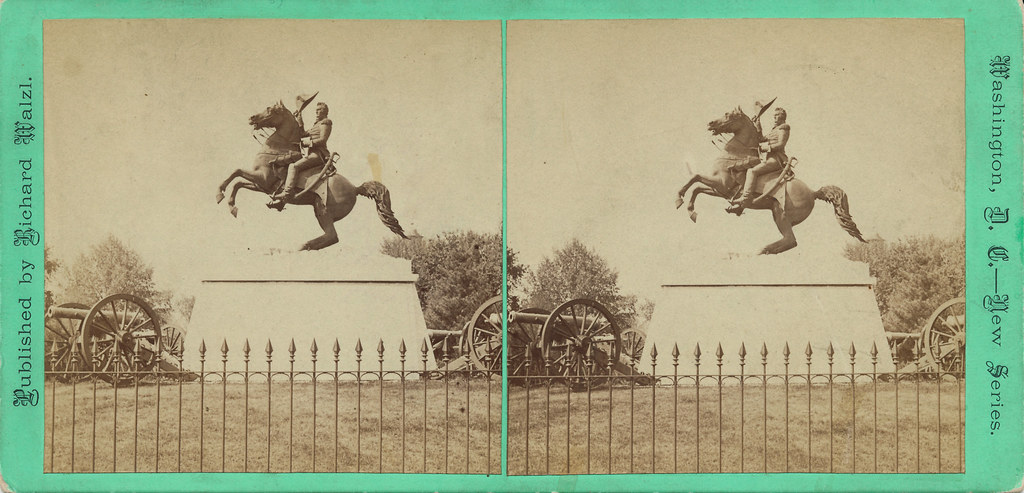 |
| This stereoview, from the 1870s, was labelled correctly (Author's collection). |
As
James Goode explains in his 2010 White House History essay, the sculpture is especially notable because it was the first bronze statue cast in the U.S. and the first equestrian statue to be balanced entirely on the horse's hind legs. Completed in 1853, it shows Andrew Jackson atop his horse Duke, reviewing his troops at the Battle of New Orleans.
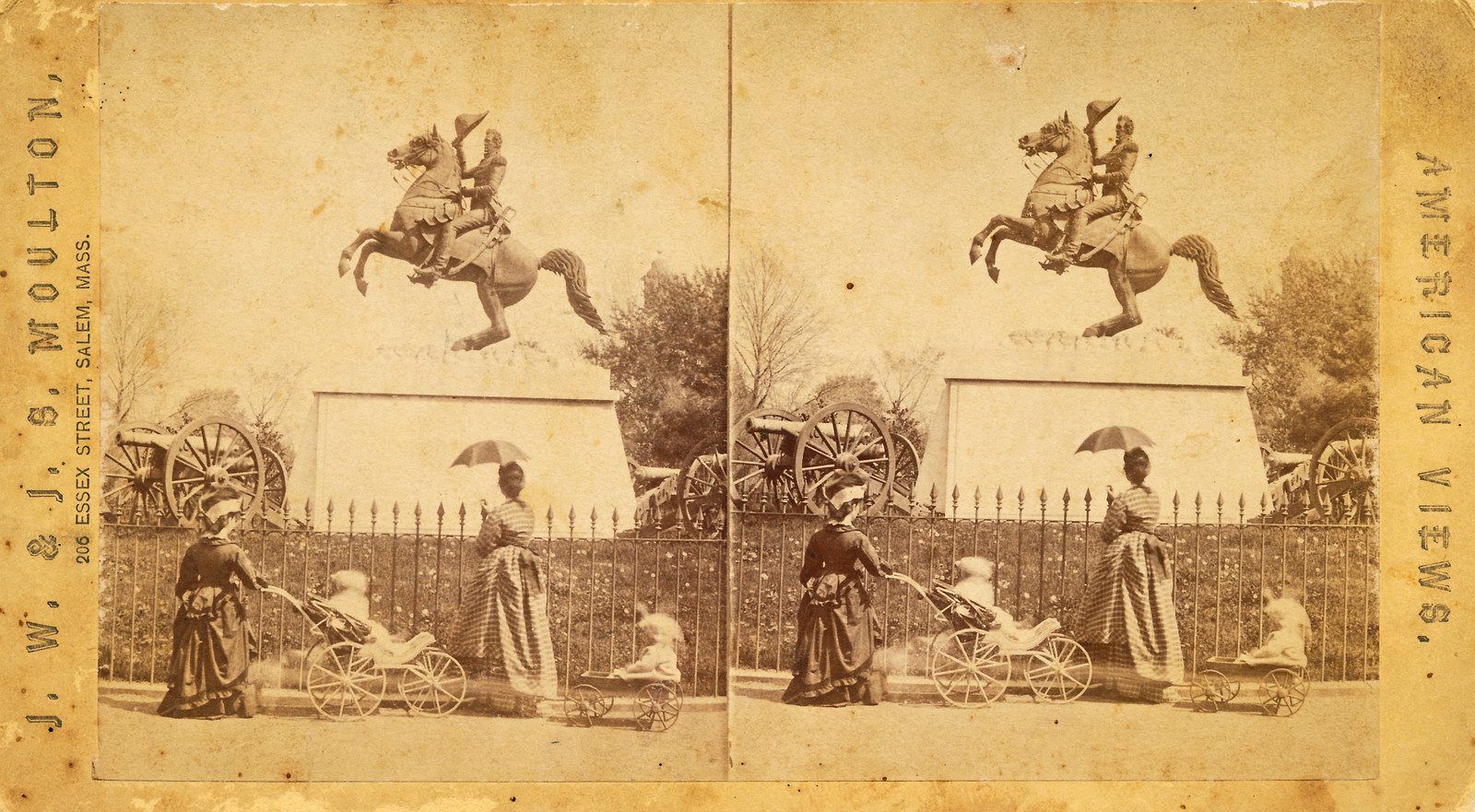 |
| The statue's admirers (Author's collection). |
Jackson was a revered war hero at the time of his death in 1845. Within months, a committee was formed to raise money for an equestrian statue of Old Hickory, with the express intent that it celebrate his military prowess rather than his role as President.
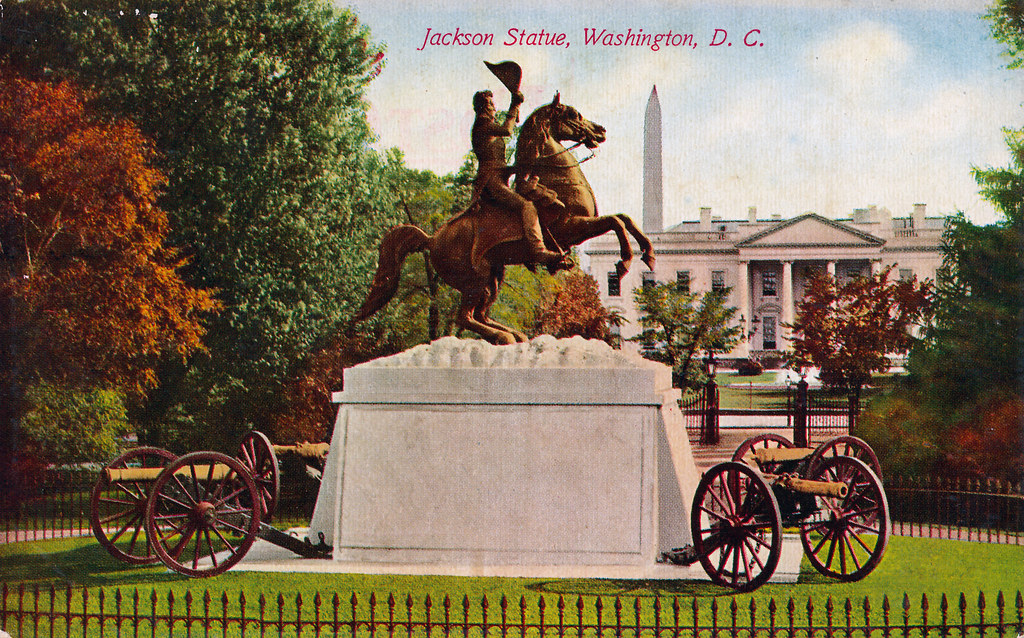 |
| Postcard views of the statue, circa 1907 and 1910 (Author's collection). |
Mills, a little-known sculptor with modest experience, was awarded $12,000 in 1848 to complete the statue. He built a makeshift studio on the Treasury Department grounds and set to work, training his horse Olympus to rear on its hind legs and serve as a model. The job took several years and suffered various setbacks but eventually the 15-ton sculpture, cast in ten different parts, was completed. It was dedicated with much fanfare on the 38th anniversary of the Battle of New Orleans in 1853.
 |
| The statue as it appears today (photo by the author). |
 |
| Not looking like George Washington. |





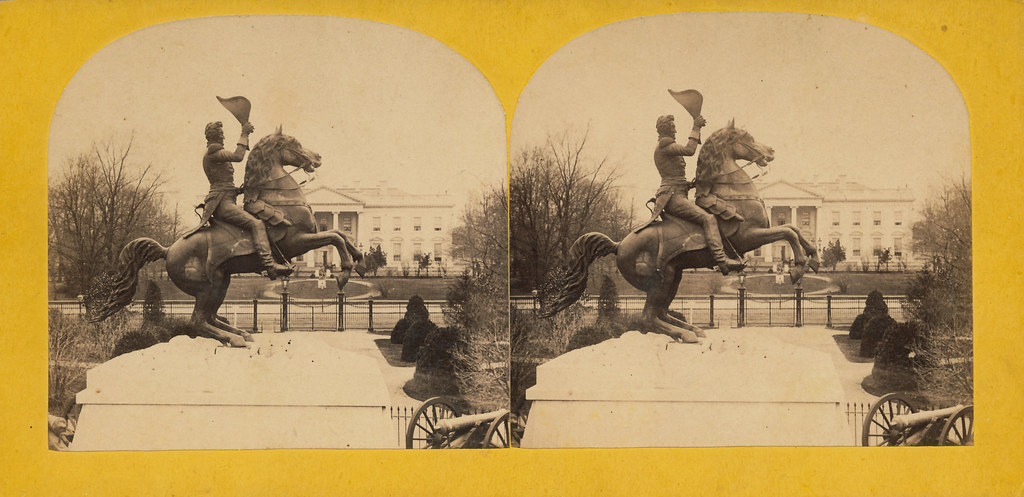
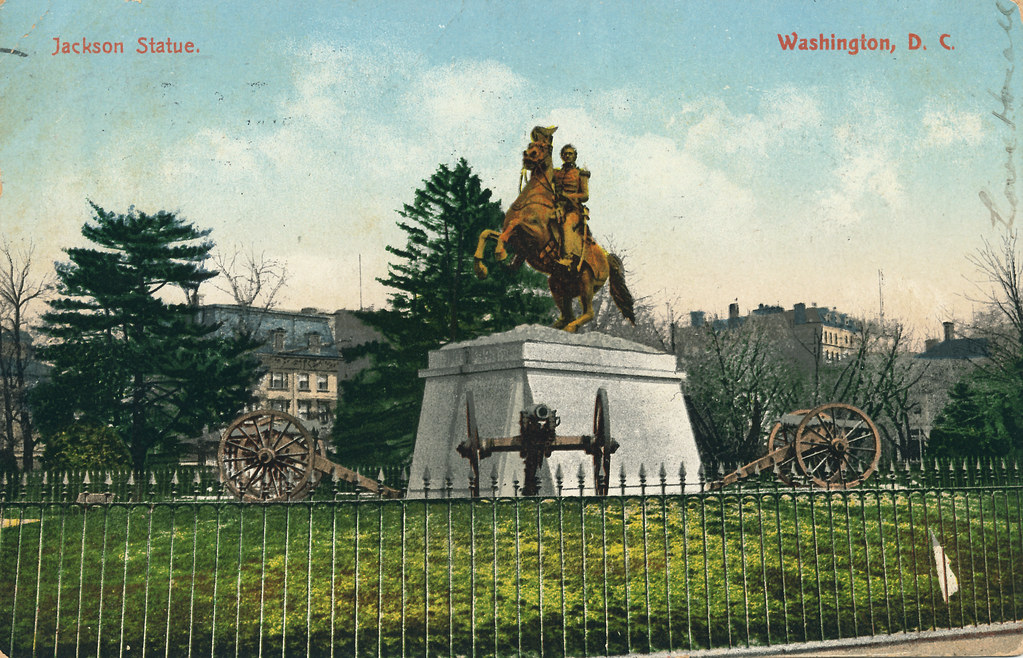


I use this equestrian statue to counter and debunk the 'hooves' story concerning the fate of the rider. The horse is rearing on it's two back legs, which would have indicated, according to the story, that the rider was killed in action.
ReplyDeleteI'm not sure that Andrew Jackson was even wounded in battle and he certainly lived through them to become President.
Perhaps the hooves relate the fate of the horse, not rider, and the horse represents the Second Bank of the US. :-)
ReplyDelete